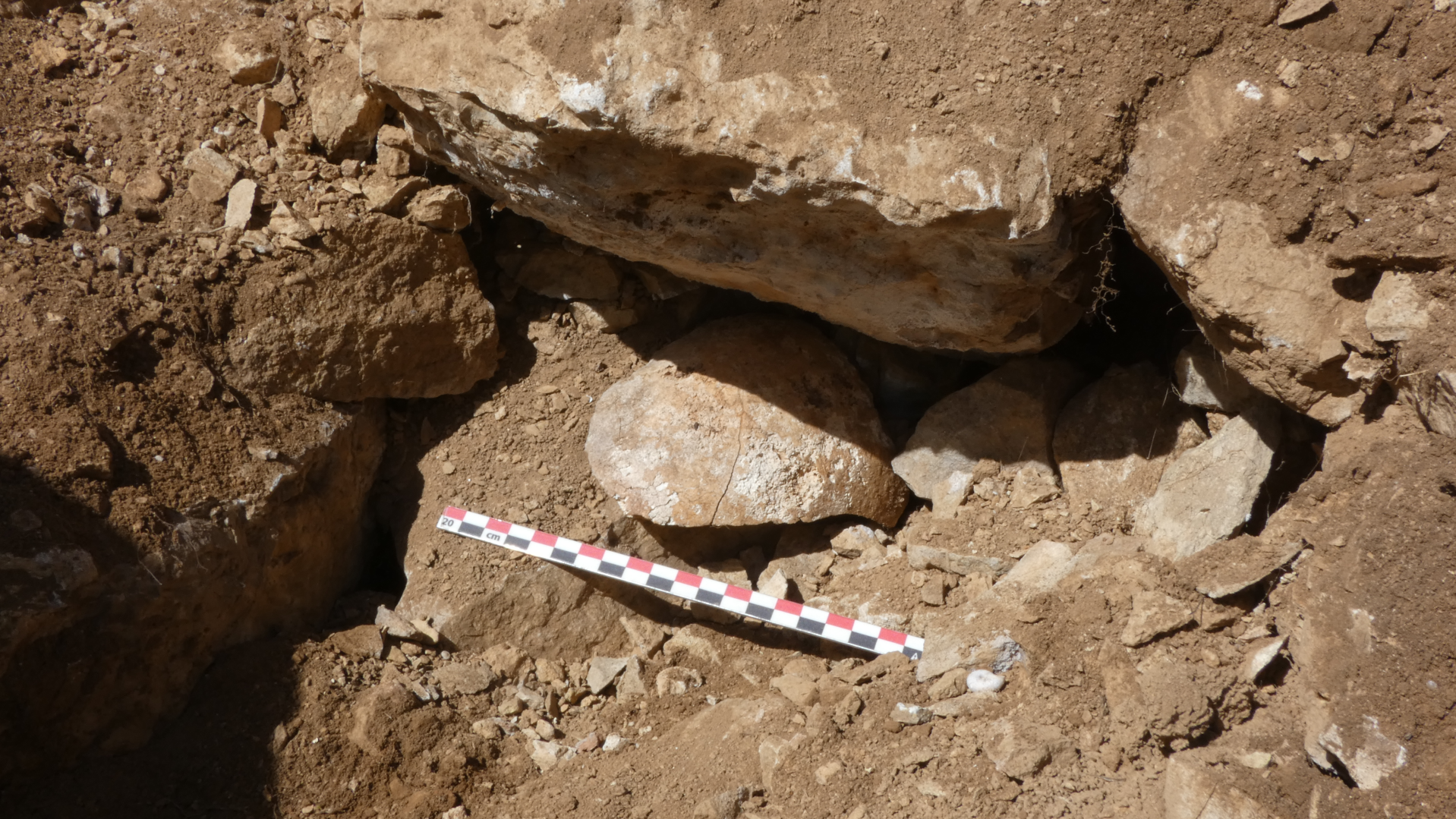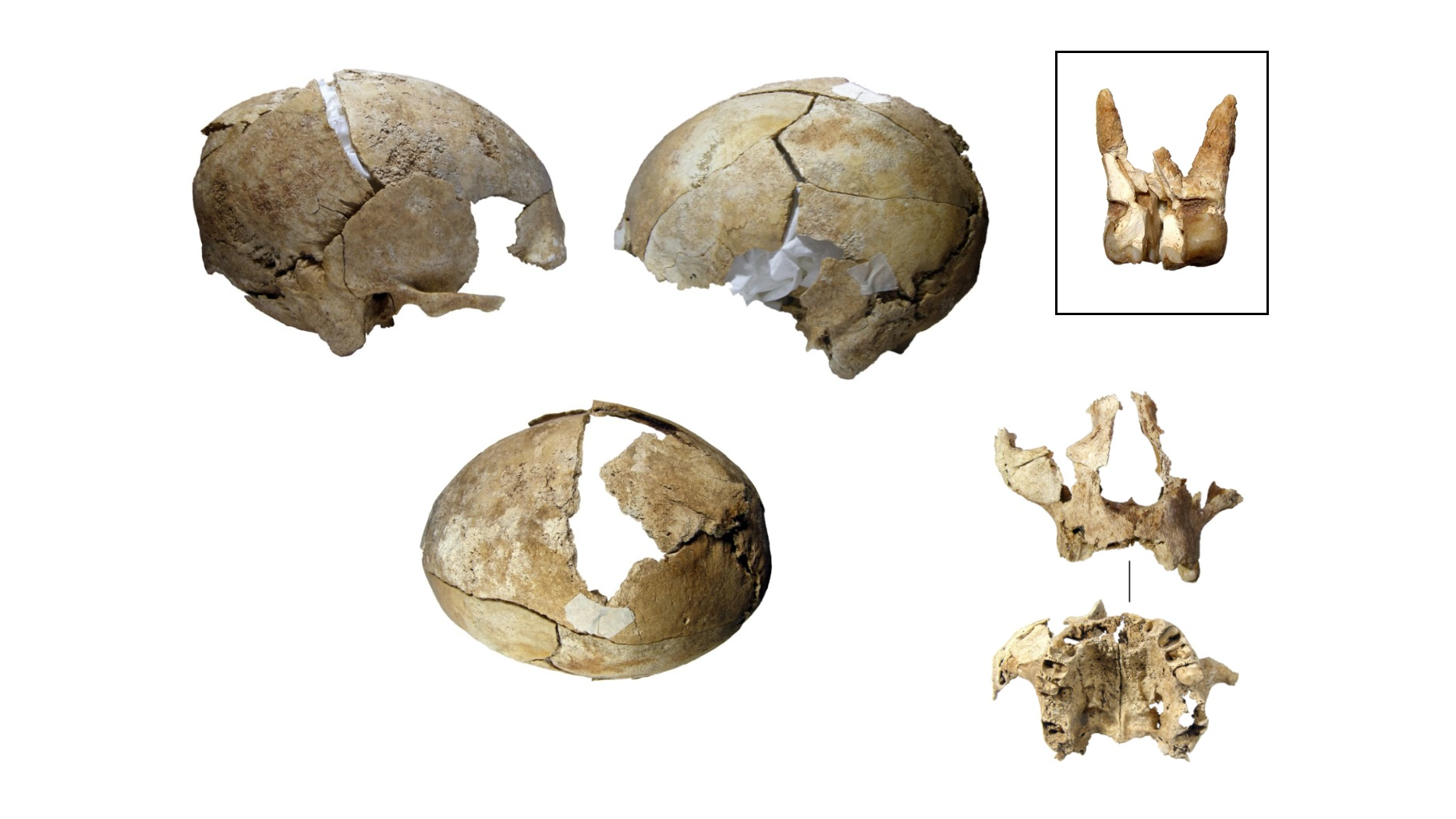Archaeologists discover decapitated head the Romans used as a warning to the Celts
A lone skull discovered near the walls of an ancient fort highlights the Romans' brutal treatment of their conquered foes.

Archaeologists have recovered a single human skull from the walls of a 2,000-year-old fort in Spain. Their study of the skull reveals that a local soldier was brutally killed by Roman forces, who then decapitated him and placed his head on the walls of a fort as a warning to others.
In the first century B.C., Rome repeatedly waged war against the Cantabri, fierce Celtic warriors who lived in what is now northern Spain, to gain control over the Iberian Peninsula. The Cantabrian Wars (29 to 19 B.C.) were fought in part by the first Roman emperor Octavian (later known as Augustus) himself. During these wars, the Romans prevailed over the Cantabri in the siege of La Loma ("The Hill"), a fortified Celtic town in the modern province of Palencia, in 25 B.C.
During recent excavations at La Loma, archaeologists discovered a single human skull inside the collapsed fort walls. In a study published Nov. 11 in the Journal of Roman Archaeology, the researchers determined that the skull belonged to a defender of the Celtic fort who met an untimely end before becoming a symbol of the Romans' victory.
Just outside the fort's walls, archaeologists recovered hundreds of projectiles, revealing that, in its final hours, La Loma was riddled by storms of Roman arrows. Scattered on the ground were fragments of armor and weapons that appeared to have been damaged in hand-to-hand combat between the Cantabri and the Romans, the researchers wrote. After their success, the Roman troops pulled down the walls, destroying the fort.
The human skull was broken and scattered in the corner of the fort, but it clearly belonged with the layer of debris associated with the collapse of the defensive walls, the researchers noted in the study.
DNA analysis of the skull showed that it came from a man who was likely local to the area, and the researchers estimated that he died at around 45 years old. They did not find any evidence of a grave or the rest of the skeleton.
Given the flaking of the skull bones, their light color, the fragmentary state of the skull and the lack of other bones, the researchers suspect the skull was put out in the elements, rather than buried.
Get the world’s most fascinating discoveries delivered straight to your inbox.

"The skull was broken during the demolition of the walls," Santiago Domínguez-Solera, director of Heroica Archaeology and Cultural Heritage and lead author of the study, told Live Science in an email. "This means that the head was exposed for a few months."
The researchers suspect that this man died while defending the fort and that the Romans deliberately placed his decapitated head on top of the wall during their occupation of the site.
"Afterwards, the head fell next to the wall and was buried in the rubble that was created when the Romans destroyed the fortifications and abandoned their position there," the researchers wrote.
Roman legions often exposed whole corpses and parts of their defeated enemies, especially heads and hands, according to the study. "These punitive acts may have been part of strategies of intimidation," the researchers wrote, with this decapitated head serving as a "war trophy."
But the exact circumstances of the display are unclear.
"We don't know how the head was exposed," Domínguez-Solera said. "There aren't diagnostic marks over the bone surface" that would suggest if it was, for example, impaled on a pike.
More work is planned at La Loma to better understand the vicious siege.
"This year, we found other skull fragments — human ones — in other areas of the [fort's] entrance," Domínguez-Solera said. "We are going to study them for more evidence of punishments."
Roman emperor quiz: Test your knowledge on the rulers of the ancient empire

Kristina Killgrove is a staff writer at Live Science with a focus on archaeology and paleoanthropology news. Her articles have also appeared in venues such as Forbes, Smithsonian, and Mental Floss. Kristina holds a Ph.D. in biological anthropology and an M.A. in classical archaeology from the University of North Carolina, as well as a B.A. in Latin from the University of Virginia, and she was formerly a university professor and researcher. She has received awards from the Society for American Archaeology and the American Anthropological Association for her science writing.
You must confirm your public display name before commenting
Please logout and then login again, you will then be prompted to enter your display name.
